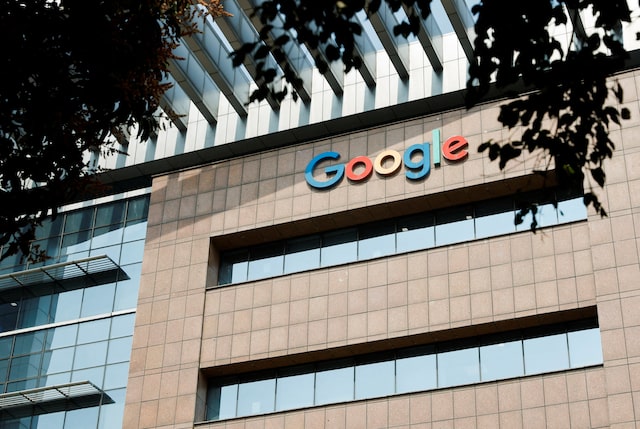A logo of French bank Societe Generale is seen on the company’s skyscraper at the financial and business district of La Defense near Paris, France September 14, 2023. REUTERS

The logo of Commerzbank is pictured at the company’s headquarters in Frankfurt, Germany, February 13, 2025. REUTERS
Aug 29 (Reuters) – Resurgent European bank shares, up over 40% this year, face testing times with sentiment already being challenged by renewed French uncertainty.
Still, investors may find it hard to ignore the pull of Europe’s best performing sector of the year so far. An investor who bought into European banks five years ago is sitting on a net return of around 300% versus 70% for the broader market, LSEG data shows.
1. EARNINGS’ BOUNCE MAY NOT LAST
Strong earnings, bolstered by relatively higher interest rates in the past few years – before recent cuts – and brighter growth prospects have driven the rally, with a majority of banks outperforming earnings estimates.
Morningstar senior equity analyst Johann Scholtz argues that alongside falling rates, future earnings are likely to be flat-to-lower with tariffs potentially lifting companies’ bad-loan provisions, which RBC says have been stable until now.
“We definitely expect corporate defaults to increase as a result of tariffs,” said Scholtz.
Morgan Stanley analysts said Q2 earnings supported a view that net interest income (NII), the difference between earnings on loans and investments and what banks pay on deposits, has bottomed sooner than expected and notes growth should resume in 2026.

2. NO MORE RATE CUTS
Even if earnings momentum ebbs, banks should draw support as European Central Bank rate cuts near an end while the negative-rates era appears firmly in the past.
“People really underestimated the damage that zero and negative interest rates, that we had for a decade, did to European banks,” said Morningstar’s Scholtz.
A recent European Parliament study found that European banks are especially sensitive to rates compared to U.S. peers, with NII making up 60% of net operating income.
While rates have fallen from a peak of 4%, they are not expected to drop much below 2% as an EU-U.S. tariff deal eases economic uncertainty.
“We’re almost in a sweet spot where banks are able to finally benefit from these deposit franchises that they have, but at the same time, you’re not seeing that stress on the credit side,” said MFS Investment portfolio manager Shanti Das Wermes.
This sheep farm in South Africa has shifted its practices in a bid to meet sustainable standards.

Expectations that further UK rate cuts are limited have supported NatWest (.NWG.L), Lloyds (LLOY.L), and Barclays (BARC.L). Their shares are up 35-50% this year, still below where they traded pre-crisis in 2008.

3. WINNERS, LOSERS
A sign of confidence in banks’ prospects of generating more shareholder value is a rise in the price-to-book ratio for the average lender in the STOXX Europe 600 Banks index, comparing a lender’s market value with the value of its assets. It’s risen to 1.12, after years of trading below one.
Yet, not all lenders are performing equally well. German and Spanish bank shares have outperformed, given M&A prospects around Commerzbank (CBKG.DE)and Sabadell (SABE.MC).
Spain’s vibrant economy supports banks intertwined with the broader economy, Germany’s fiscal stimulus bolsters growth prospects and German business morale in August hit a 15-month high.

In contrast, Switzerland’s UBS (UBSG.S), faces challenges from high U.S. tariffs, 0% rates and new capital regulations.
This week’s tumble in French bank shares on renewed political turmoil, highlights how quickly sentiment can turn. Societe Generale (SOGN.PA), on Tuesday suffered its biggest daily fall since April.

4. LESS RISKY
Broadly speaking, however, investors attach less risk to banks. The cost of insuring against a default, reflected by credit default swaps, is falling.
Deutsche Bank, CDS, which briefly shot up above 200 basis points in 2023 as a U.S. banking crisis spread to Europe, trades around 54 bps.
A recovery in high-risk AT1 bank bonds, whose existence was called into question as Credit Suisse collapsed that year, remains solid.
“They (AT1s) are a lovely combination – great returns. Effectively investment grade paper without the investment grade tag,” said Premier Milton CIO Ian Birrell, mentioning his large exposure to financials.
European bank shares recently touched their highest since 2008 and the sector is stronger than it was then with leverage levels lower, analysts said.

5. BUY THE DIP?
Christian Sole, deputy head of Fundamental European Equity at Candriam, was more neutral on banks, having piled into them before the 2020 COVID crisis when they were “very cheap”.
“The momentum is still positive, but the price is not allowing us to be too optimistic,” Sole said, adding that recession risks, while not a forecast, were not priced in.
Others saw any selling as an opportunity. Morgan Stanley this week recommended “buying the dip” on European banks as they weakened.

Reporting by Jakob Van Calster and Mateusz Rabiega in Gdansk; Additional reporting by Alun John and Tommy Wilkes in London; Editing by Dhara Ranasinghe and Susan Fenton




